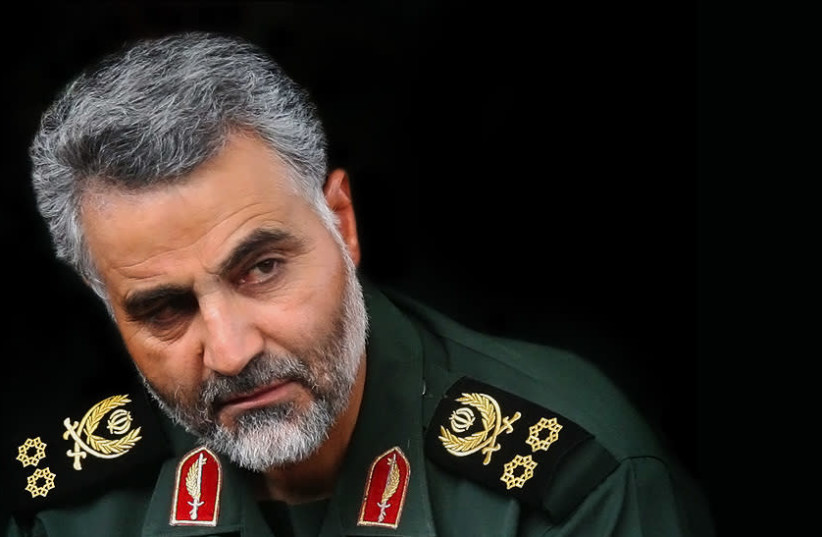In mid-June, many more details will emerge, but there is already a relatively definitive account of how Israel failed to prevent Hamas’s October 7 invasion.
Leaks appeared in the Arab media about Hamas’s operational timeline and preparations, along with special security steps Hamas took to prevent even its leader in Qatar, Ismail Haniyeh, from knowing about the invasion until hours before the attack.
But on Tuesday, former IDF intelligence chief and INSS Director Tamir Hayman gave the fullest account yet of what most likely shifted Gaza Hamas leader Yahya Sinwar from an apparent state of deterrence to risking everything on a one-day rampage of mass murder and kidnapping.
Hayman noted from the outset that although Sinwar was extremely “successful” at the first stage, he made a “huge strategic mistake” since he did not even come close to anticipating that his attack would lead to a sustained six-month and running Israeli invasion of Gaza.
He said that the assassination of Iran Islamic Revolutionary Guard Corps Quds Force Chief Qasem Soleimani in January 2020 may have moved the regional situation toward a greater focus on the Hamas-Israel front.

He said that in addition to developing the nuclear threat, Soleimani was more focused on threatening Israel from Lebanon and Syria. He had a more “Middle East regional” outlook and wanted to “bring Gaza to Iran.”
Hayman added that Soleimani did not know Hamas or Gaza well and had probably “not even heard of places like Nuseirat” in central Gaza.
In contrast, Hezbollah Chief Hassan Nasrallah, who Hayman said replaced Soleimani as Iran’s chief regional strategist dealing with Israel more than Soleimani’s official replacement, Esmail Ghaani, knew Hamas and Gaza much better than the Iranians did.
According to Hayman, Nasrallah worked on “bringing Iran to Gaza” – meaning investing more of the Islamic Republic’s anti-Israel attention on Hamas, and moving Hezbollah and Syria into more of a backup threat.
This empowered Sinwar in terms of resources, weapons, and gave him the feeling that he could rely on other Iranian proxies to step in big time if he started a larger conflict with Israel.
Another turning point for Sinwar, noted Hayman, was the May 2021 Gaza conflict.
If Israel concluded that the conflict deterred Sinwar from 2021 until October 2023, Hayman said that Sinwar seemed to have reached the opposite conclusions.
Despite significant Hamas losses inflicted by the Israeli air force and the unimpressive performance of other fronts. Hayman maintained that Sinwar saw it as a success on all fronts.
He was enthralled by the reaction of Palestinians in the West Bank, Israeli Arabs, and Hezbollah’s involvement, showing that he, Sinwar, could activate four fronts at once against Israel, said Hayman.
In other words, Sinwar viewed it as a warm-up and given a large enough operation against Israel, he believed he could inflame all of these fronts against Israel in a much more serious way.
Although Hamas has gotten some support from some of these fronts, and also from the Yemeni Houthis, essentially their support fell far short of what he expected.
But Hayman said that Israel should have been ready for the possibility that Sinwar would try a poor but dangerous gamble, instead of assuming he would act rationally, according to Israeli or Western terms.
Next, Hayman said that Sinwar concluded after the May 2021 Gaza conflict that the Palestinian Authority, however weak, was still too strong for him to take over in the West Bank.
All of this shifted Sinwar toward the idea of a high-stakes invasion over incremental provocation against Israel. But the final decision to launch the attack required additional turning points.
Hayman said that Sinwar suspected that the IDF itself might be preparing various operations against its adversaries after the high holidays, so a preemptive attack would switch the element of surprise to him.
An opportunity to disrupt Israel's normalization process with Saudi Arabia
He also stated that Sinwar saw an opportunity to disrupt the Israeli normalization process with the Saudis, even if he was not given a specific Iranian order to do what he did on that front.
Moreover, Hayman said that he concluded that all of his rockets, tunnels, and other cards he held would not free the thousands of Palestinian security prisoners who se release could elevate him to truly new levels in the pantheon of Palestinian leaders.
Furthermore, he decided that Israel itself was unusually weak due to the very public protests over the government’s judicial overhaul which led thousands of IDF reservists to say they had quit, Hayman said.
In addition, Sinwar also felt that Israel’s two far-right ministers threatened to change the status of the Temple Mount in a permanent way which would cause the Palestinian national project to lose face in the Islamic world.
Former IDF intelligence analysis chief Brig.-Gen. Yossi Kuperwasser agreed with Hayman about the influence of the judicial overhaul but added that the October 2022 Israel-Hezbollah maritime agreement under the Bennett-Lapid government may have conveyed the impression to Sinwar that Israel could be pushed around.
In addition to many of the past problems that others have listed which led to Israel misjudging Sinwar, Hayman said that Israel’s MABAM strategy, its ‘war between the wars’ in Syria and in Lebanon, inflated Israel’s confidence.
Hayman said that most top IDF officials believed that Israel’s MABAM strategy intimidated Sinwar and showed that Israel was still strong, whereas he seems to have concluded that Jerusalem was not prepared for a real ground war, only limited air strikes.
